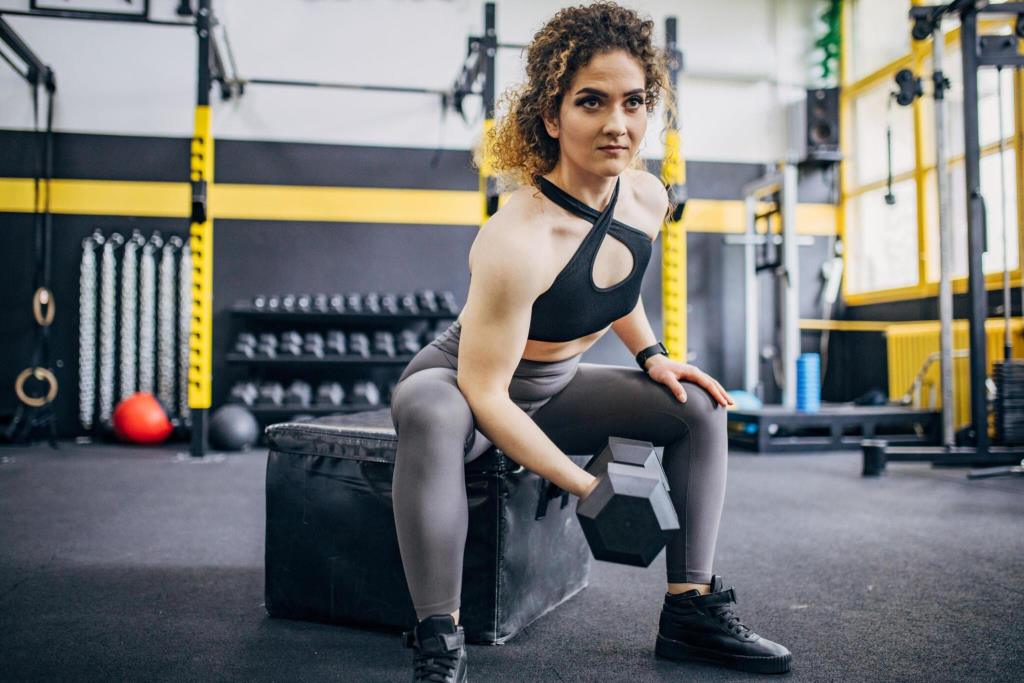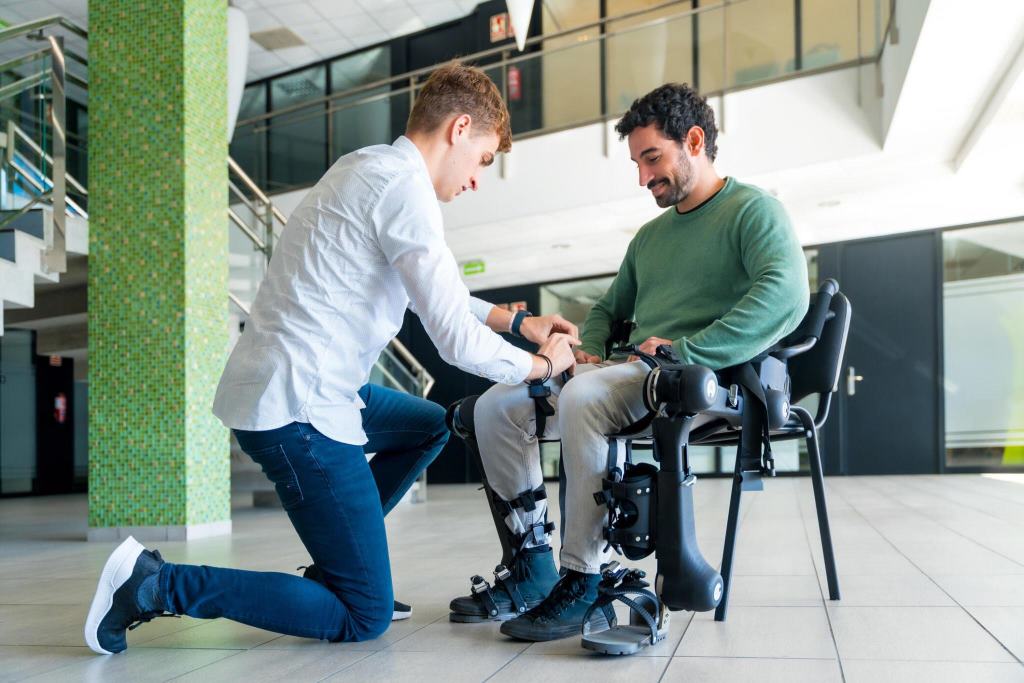Athletes, whether they are amateurs or professionals, always strive to improve their performance, prevent injuries, and recover quickly from strain. Physical therapy has become an aspect of sports medicine as it offers an approach to enhance athletic abilities.
In this article, we will explore the benefits of therapy in sports including its various applications, techniques and its vital role in supporting athletes on their journey towards achieving peak performance.
Understanding the Role of Physical Therapy in Sports
Recognizing the significance of physical therapy in sports reveals its influence on athlete’s performance and recuperation. This specialized method of rehabilitation centers around injury prevention enhancing movement and accelerating recovery all aimed at enabling athletes to reach their physical state and sustain long term success, in their particular sports.
The Significance of Physical Therapy for Athletes
Athletes face rigorous demands that can lead to injuries and performance limitations. At Arc Physio, our dedicated team provides personalized care to address physical challenges stemming from illness, injury, disability, or aging.
Beyond injury treatment, our focus is on proactive therapy, targeting biomechanical imbalances, enhancing flexibility, and optimizing performance. Whether recovering from injury or striving for peak performance, our holistic approach ensures athletes receive the support they need to excel in their sport.
1. Taking Proactive Measures for Longevity
Embracing health practices is key to achieving a healthy life. By adopting an approach that includes maintaining a lifestyle engaging in regular exercise and seeking preventive healthcare we can significantly enhance our overall well-being and promote longevity.
- Biomechanical Assessment: Physical therapists thoroughly assess athletes bodies to identify weaknesses or imbalances that could lead to injuries. This proactive approach allows for interventions before issues escalate.
- Customized Exercise Programs: Athletes are provided with exercise routines that focus on muscle groups aiming to enhance stability, flexibility and overall resilience in order to prevent injuries.
- Education on Techniques: Physical therapists educate athletes about techniques for warming up, cooling down and executing movements correctly to minimize the risk of injuries during training and competition.

2. Swift and Effective Recovery
Ensuring quick and effective recovery is crucial, for both athletes and individuals. By giving importance to recovery methods such as therapy we can ensure that injuries heal in a manner minimizing the time spent on the sidelines and enhances performance in sports and everyday tasks.
- Individualized Treatment Plans: For athletes recovering from injuries physical therapists create customized treatment plans that address the nature of the injury while taking into account the athletes sport and position.
- Progressive Rehabilitation Exercises: Gradual and progressive exercises help rebuild strength, flexibility and coordination ensuring a recovery process.
- Modalities for Pain Management: Physical therapists incorporate modalities like ultrasound, electrical stimulation and cryotherapy to manage pain and reduce inflammation during the recovery phase.
Performance Optimization
Improving performance is extremely important, for athletes and people aiming for their shape. By using physical therapy techniques individuals can enhance their mobility, strength and stamina. This ultimately helps them achieve performance both in sports and everyday activities.
- Biomechanical Analysis: Through in depth analysis of an athlete’s movement patterns physical therapists can identify areas for improvement that contribute to enhanced efficiency and performance.
- Strength and Conditioning Programs: Tailored strength and conditioning programs are designed to target muscle groups in order to optimize power, speed and endurance based on the requirements of the athlete’s chosen sport.
- Sport Specific Training: Physical therapists integrate exercises. Drills, into training programs ensuring that athletes acquire the necessary skills and conditioning for their specific sports.
Techniques and Approaches in Physical Therapy
Physical therapy is a field that encompasses an array of techniques and methods designed to restore and improve physical function. It includes therapies, specific exercises and advanced technologies. Having an understanding of these approaches enables practitioners to customize treatments, for individuals seeking rehabilitation and enhanced mobility resulting in the best possible outcomes.
1. Manual Therapy
Manual therapy, a hands on method used in therapy involves expert manipulation of tissues and joints. The main goal of this technique is to reduce pain, enhance the range of motion and improve function. It offers an efficient path, towards recovery.
- Joint Mobilization: Physical therapists employ hands-on techniques to mobilize joints, enhance range of motion and address any imbalances in the system.
- Soft Tissue Manipulation: Techniques such as massage and myofascial release are used to alleviate muscle tension, reduce tissue and improve flexibility.

2. Exercises
Physical therapy relies on exercises as an aspect aiming to enhance strength, flexibility and overall function by targeting muscle groups. These exercises are customized to meet the needs of individuals and play a role in rehabilitation, preventing injuries and optimizing physical performance.
- Strength Training Exercises: Targeted exercises designed to strengthen muscle groups addressing weaknesses and imbalances that could affect athletic performance.
- Proprioceptive Training: Activities that improve proprioception and neuromuscular control contributing to balance and coordination.
- Plyometric Training: exercises focusing on movements that aid in developing power and agility.
3. Modalities for Recovery
Different methods used in therapy to treat pain reduce inflammation. Promoted healing are known as recovery modalities. These modalities include techniques such as heat and cold therapies as electrical stimulation. Having knowledge about these modalities can improve the effectiveness of rehabilitation. Offer a range of options, for personalized recovery plans.
- Cryotherapy: The application of therapy to reduce inflammation and relieve pain; commonly employed in treating injuries.
- Heat Therapy: Applying heat to increase blood flow relax muscles. Enhance flexibility; often used for conditions or as a precursor, to therapeutic exercises.
- Electrotherapy: Utilizing stimulation to manage pain improves muscle function and expedites the healing process.
The Role of Physical Therapy in Sports
Physical therapy plays a role in the success of athletes. This specialized form of rehabilitation is dedicated to preventing and treating injuries related to sports, enhancing performance with exercises and ensuring athletes stay in physical shape for consistent excellence, in their chosen sports.
1.Football
Physical therapy plays a role in football, impacting injury prevention, speedy recovery and the overall well being of athletics. Customized exercises, hands on therapies and cutting edge techniques all work together to enhance footballers performance and ensure their longevity, on the field.
- Injury Prevention for Football Players: Emphasis on strengthening the extremities improving agility and addressing injuries like sprains, strains and concussions.
- Rehabilitation for Football Injuries: Tailored programs designed to aid recovery from injuries such as ACL tears, hamstring strains and ankle injuries. The focus is on ensuring a return to play.
2. Running and Endurance Sports
Physical therapy plays a role, in improving performance and minimizing injuries, in the realm of running and endurance sports. By customizing exercises conducting gait analysis and performing assessments physical therapists help runners enhance their strength, flexibility and overall endurance.
- Gait Analysis: Assessing running biomechanics to identify factors contributing to injuries like overpronation or improper running form.
- Strength Training for Endurance Athletes: training programs aimed at improving endurance, preventing overuse injuries and enhancing overall performance.
3. Basketball
Physical therapy plays a role in basketball as it helps players maintain their health and performance. The main goal of interventions is to address the requirements of the sport focusing on preventing injuries aiding in rehabilitation and improving overall strength and agility to ensure consistent excellence, on the court.
- Preventing Common Basketball Injuries: Implementing exercises to reduce the risk of ankle sprains, knee injuries and stress fractures commonly associated with basketball.
- Rehabilitation for Basketball Injuries: recovery plans for conditions such as tendinitis meniscus tears and shoulder injuries.
Integrating Physical Therapy into Athletic Training
Incorporating therapy into training is a smart strategy for training that guarantees athletes receive complete care. This combination of rehabilitation and training maximizes performance and reduces the risk of injuries. Promotes well being. It enables athletes to pursue their goals, with increased strength, endurance and longevity in their chosen sports.
1. Customized Programs for Optimal Performance
Tailored programs aimed at optimizing performance focus, on customizing physical therapy interventions according to requirements. By targeting strengths, weaknesses and objectives these programs aim to maximize athletes and individuals potential to reach their physical capabilities and overall wellness.
- Collaboration with Coaches: Physical therapists work closely with coaches to integrate rehabilitation techniques and performance enhancement strategies into an athletes training regimen.
- Continuous monitoring and adjustments: Regularly evaluating an athlete’s progress allows for modifications to exercise programs ensuring that interventions remain effective and, in line with training goals.
- Scheduled check-ins: Athletes benefit from scheduled meetings with therapists, who provide support, guidance and make adjustments as needed to optimize performance and prevent potential issues.

2. Future advancements in therapy for sports
Looking into the future of sports therapy reveals a changing landscape of techniques, technologies and approaches. By anticipating advancements in preventing injuries, improving performance and enhancing recovery strategies we catch a glimpse of the potential that lies ahead in the field of sports therapy.
- Integration of technology: Ongoing integration of technologies like sensors, virtual reality and artificial intelligence will enhance diagnostics and treatment planning.
- Tailored precision medicine: Advancements in profiling and personalized medicine will enable physical therapy interventions to be customized based on an athletes genetic makeup.
- Mental health focus: Recognizing the connection between mental well being and future physical therapy approaches may increasingly incorporate strategies to improve mental health resilience among athletes.
conclusion
In conclusion physical therapy plays a role in enhancing performance by preventing injuries facilitating speedy recoveries and maximizing an athletes overall physical capabilities. The comprehensive approach of therapy, therapeutic exercises and recovery modalities aligns with the needs of athletes, across various sports.Looking ahead the fusion of technology, precision medicine and a greater emphasis on well being is expected to enhance the influence of physical therapy in sports.










